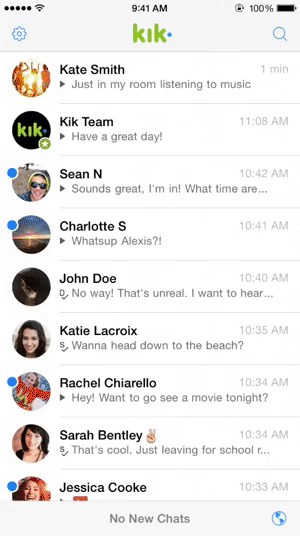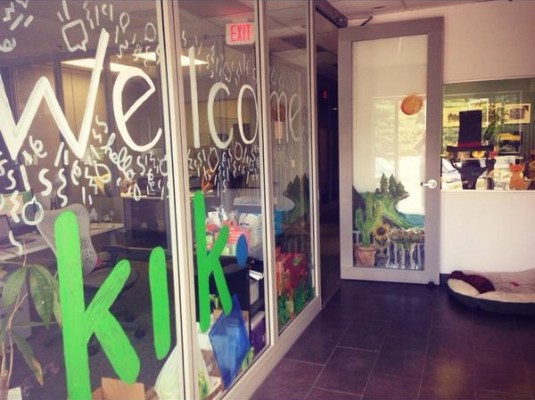Facebook has developed an app platform for Messenger, but underdog rival Kik has continued its focus on putting the entire web in chat after upgrading its in-app sidebar browser into a full-blown browser for its messaging app.
The change means that Kik users can now summon a full browser inside their chats with friends. Previously the browser was limited, since it was loaded from the sidebar as part of the chat window. This change translates to a more immersive experience, which lets Kik’s 200 million registered users surf the web while talking to friends; for instance I could listen to Soundcloud while chatting. It also gives them the option to easily share web pages and services in chats.
“The older experience was more like a browser besides the messenger, it was not particularly chat-centric,” Mike Roberts, head of mobile development at Kik told TechCrunch. “The new design makes it easier to view content or browse the web.”

That’s important for a number of reasons. For one thing, Kik’s content platform is based on HTML. The company has plans to launch a payments service this year, and subsequently introduce commerce and other services inside its app, based on HTML and the browser experience.
There are also plans to expand into more immersive media, as we wrote when Kik added native video capture to its service last month. The company acquired GIF messenger service Relay last year, and it is likely to introduce related services very soon.
“Content is a pretty key part of the experience. There’s a lot of content coming up — we acquired Relay for a reason,” Roberts said.
In addition to putting more emphasis on the browser, Kik said it has begun selecting recommended content for users when they open the browser. That means that certain services — including stickers, memes and Kik’s points service — will show up when the in-chat browser is opened, pushing users toward more engaging and sharable content
Facebook has opted for a “federation of apps” approach to Messenger, after partnering with a number of companies that created new versions of their apps that are optimized for the Facebook service. Kik, however, has been there and done that, having launched a “connected app” SDK in 2011. The Canada-based company believes a web-based platform is more advantageous for users.
“Facebook is starting out with a platform like we did three years go, [but that’s a] high friction sharing experience ,” Roberts said, referring to the fact that Messenger users must download standalone apps to take advantage of the platform. “That was our number one reason to shift to web: it’s a question of ‘How can I share something without having to go an app store?'”
Kik, which is engaging with strategic partners with a view to developing its service via partnerships, has had its overall focus on messaging apps as platforms validated by Facebook’s move, but now it is doubling down on its key differentiator: the web.
